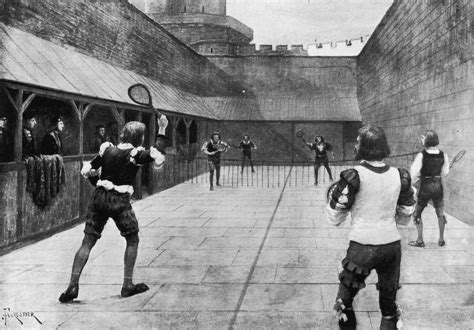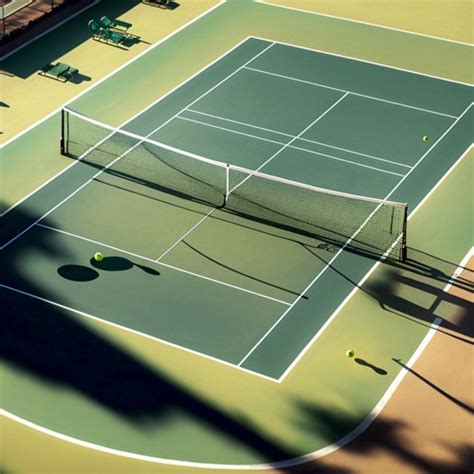Explore the rich history of tennis, from its origins to major tournaments, key figures, and modern innovations shaping the game today.Promotional Title: The History Of Tennis: From Its Origins To The Modern Game
Tennis, a game rich in tradition and excitement, boasts a timeless history that intertwines cultural evolution and sporting excellence. From its early origins in the ancient courts of France to the electrifying matches of today, the sport has undergone remarkable transformations. This article will take you on a captivating journey through the centuries, exploring the fascinating origins and the early practices that laid the groundwork for modern tennis. We will examine how the game’s rules and formats have evolved, recognize the key figures whose passion and innovation shaped its path, and understand how major tournaments influenced its trajectory. Finally, we’ll delve into the cutting-edge developments that are reshaping tennis for the future. Join us as we unravel the remarkable history of this beloved game!
The History Of Tennis: Origins And Early Practices
The history of tennis can be traced back to the 12th century, where it is believed to have originated in France. Early forms of the game were played with hands rather than racquets. The players would strike a ball against a wall, with the objective being to hit the ball in such a way that it would bounce back in an unreturnable direction. This primitive version laid the groundwork for what would evolve into a more structured sport.
By the 16th century, variations of the game, such as the one referred to as jeu de paume, began to incorporate the use of gloves and later, racquets. The game’s growing popularity spread across Europe, notably within the royal courts of France and England. It became a favored pastime among nobility and was often played in specially constructed indoor courts.
During this period, the basic concepts of scoring, including the use of the terms love, fifteen, and thirty, began to take shape. These terms have persisted in the modern game, showcasing the enduring legacy of early tennis practices in the history of the sport.
The 19th century marked a significant turning point for tennis. The establishment of formal rules in England led to the first tennis club founded in 1872, and this era ultimately birthed the modern game we know today. Lawn tennis, as it became known, transitioned the sport outdoors and helped it gain widespread appeal.
Overall, the early practices of tennis highlight a fascinating evolution that reflects not just changes in gameplay but also the social and cultural contexts of its time, laying the foundation for the rich history of tennis that continues to evolve today.
Evolution Of Tennis Rules And Format Over The Centuries
The game of tennis has undergone significant transformations in its rules and format since its inception. From its early origins to the structured modern game we recognize today, the history of tennis illustrates how these changes reflect broader social trends and advancements in gameplay.
Initially, the game was played without standardized rules. Players often engaged in informal matches, where the scoring system was not yet established. It wasn’t until the late 19th century that definitive guidelines began to take shape. The introduction of the history of tennis rules saw the creation of the 15-30-40 scoring system, which contributed to the unique rhythm and strategy that defines the sport today.
Moreover, the format of tennis matches evolved significantly. Early games were often played without a limit on sets, which could lead to marathon matches lasting several hours or even days. The establishment of best-of-three and best-of-five set formats helped standardize play duration, making matches more manageable for players and spectators alike.
One notable milestone in the history of tennis occurred with the introduction of the tie-break system in the late 20th century. This innovation aimed to prevent lengthy matches and create a more exciting finish, allowing players to resolve drawn sets with a defined point structure.
As the sport continued to gain popularity, rules surrounding court surfaces and equipment evolved as well. The switch from natural materials to synthetic ones for court surfaces brought about changes in playing styles, while advancements in racquet technology transformed the way the game is played. The impact of these innovations has been crucial in defining the current formats used in professional tournaments worldwide.
Today, tennis is governed by international bodies, ensuring uniformity in rules across different levels of play, from local clubs to prestigious Grand Slam tournaments. This centralization reflects the legacy of the history of tennis, where adaptations to rules and formats have reinforced its position as a globally cherished sport.
Key Historical Figures Who Shaped The Game Of Tennis
The history of tennis is intertwined with the contributions of several key figures who have played pivotal roles in its development and popularization. Below are some of the most influential personalities who shaped the history of this beloved sport:
- Major Walter Clopton Wingfield: Often credited with creating the modern version of lawn tennis in 1873, Wingfield patented a game he called Sphairistikè. His rules and equipment laid the groundwork for the sport we know today.
- Billie Jean King: As a champion player and advocate for gender equality in sports during the 1970s, King significantly impacted the history of tennis by pushing for equal pay for female athletes and increasing women’s visibility in the sport.
- Rod Laver: The only player to have won all four Grand Slam titles in a calendar year twice (1962 and 1969), Laver’s dominance in the sport inspired generations of tennis players and fans alike, leaving a lasting legacy in the history of tennis.
- Arthur Ashe: Breaking social barriers, Ashe became the first African American player to win the U.S. Open (1968) and the Wimbledon (1975). His activism against apartheid and dedication to social justice further cemented his legacy both on and off the court.
- Steffi Graf: Graf’s incredible career, highlighted by her unprecedented Golden Slam in 1988, reshaped women’s tennis and inspired countless young players worldwide, adding another chapter to the history of the game.
These figures, among many others, have not only excelled in their careers but have also influenced the evolution and global reach of tennis, ensuring that the history of this sport continues to be rich and vibrant.
The Influence Of Major Tournaments On Tennis History
The major tournaments in tennis history have played a pivotal role in shaping the sport as we know it today. From the early beginnings of organized competitions to the grand slams we recognize now, these events have influenced various facets of the game, including its popularity, the evolution of player skills, and the establishment of international standards.
One of the seminal moments in The History of tennis was the establishment of lawn tennis as an organized sport in the late 19th century, culminating in the first Wimbledon Championship in 1877. This tournament set the standard for future competitions and underscored the significance of formalized rules and structures in the sport.
Tournaments have also provided a platform for emerging players, enabling them to showcase their skills on a global stage. Icons like Rod Laver, Serena Williams, and Roger Federer have all had their careers defined by their performances in major tournaments, establishing benchmarks for excellence and sporting legacy.
Furthermore, the spread of international tournaments has helped globalize tennis, drawing in diverse players and fans from various cultures. The four major Grand Slam events—the Australian Open, French Open, Wimbledon, and US Open—have become cultural landmarks, each contributing unique traditions and influences to The History of the sport.
Additionally, prize money and sponsorship deals stemming from these tournaments have transformed the economic landscape of tennis, allowing even lower-ranked players to stake a claim in the professional arena. As prize money has increased, so has the level of competition, pushing players to refine their skills continuously.
The influence of major tournaments on the history of tennis cannot be overstated. They have not only fostered the growth of the game but have also molded its various elements, from play styles and training regimens to global fan engagement and economic viability. As we look ahead, it will be fascinating to observe how these tournaments continue to evolve and impact the future of tennis.
Modern Innovations Shaping The Future Of Tennis History
The sport of tennis has undergone numerous changes throughout its rich The History, but the most recent innovations are paving the way for an exciting future. One of the key advancements is the integration of technology, which has transformed not only how the game is played but also how fans experience it.
First and foremost, the use of Hawk-Eye technology has revolutionized officiating on the court. This instant replay system allows players to challenge line calls, ensuring fairness and accuracy in match outcomes. As a result, it has not only increased player confidence but also enhanced the spectator experience.
Additionally, advancements in equipment technology, such as the development of new racket materials and string innovations, have allowed players to achieve greater control and power. These changes have redefined playing styles, leading to a dynamic and fast-paced game that continues to evolve.
Furthermore, data analytics and performance tracking have become integral in training and strategy. Coaches and athletes now utilize sophisticated software to analyze player movements, shot selection, and opponent tendencies, allowing for personalized training regimens that enhance performance.
Fan engagement has also seen significant improvements through social media and interactive platforms. Fans can now follow their favorite players, participate in real-time polls, and access behind-the-scenes content, making it easier to connect with the sport.
As we look ahead, the integration of virtual reality (VR) and augmented reality (AR) could further enrich the experience for both players and fans. Whether it is simulating match conditions for training or providing immersive viewing experiences for fans, these technologies promise to take the sport to new heights.
The future of tennis is being shaped by these modern innovations that draw from its rich The History while simultaneously pushing the boundaries of what is possible in the game. As technology continues to evolve, so will the sport, ensuring that tennis remains a captivating and competitive arena for generations to come.
Frequently Asked Questions
What are the origins of tennis?
Tennis can trace its origins back to the 12th century in France, where it was played by hitting a ball with the palm of the hand. The game evolved over centuries, and by the late 19th century, it had transitioned to the version we recognize today.
How did the game of tennis evolve in the 19th century?
In the 19th century, tennis evolved significantly with the introduction of rackets, and the game began to be played on grass courts. The first tennis club, The All England Lawn Tennis and Croquet Club, was established in 1868, which led to the first Wimbledon Championship in 1877.
What are some of the key developments in the rules of tennis?
Some key developments in the rules of tennis include the introduction of the ’45’ scoring system, the standardization of court dimensions, and the establishment of official rules by the United States Lawn Tennis Association in 1881, marking the formalization of the modern game’s regulations.
How has tennis equipment changed over the years?
Tennis equipment has seen significant advancements, particularly with the transition from wooden rackets to those made from composite materials. Additionally, the development of modern strings and tennis shoes has improved player performance and comfort.
What impact did the Open Era have on professional tennis?
The Open Era, which began in 1968, allowed professional players to compete with amateurs in Grand Slam tournaments. This change significantly increased the popularity of tennis, enabling players to earn prize money, which led to a boom in the sport’s global viewership and commercial opportunities.
Who are some of the greatest tennis players in history?
Some of the greatest tennis players in history include Rod Laver, Serena Williams, Roger Federer, Rafael Nadal, and Pete Sampras. Each of these athletes has made significant contributions to the sport and achieved remarkable records in their careers.
What is the current state of tennis as a global sport?
Today, tennis is a global sport with millions of players and fans around the world. Major tournaments such as the Grand Slams attract a diverse international audience, and the sport continues to evolve with advancements in technology, training methods, and increased inclusivity.









